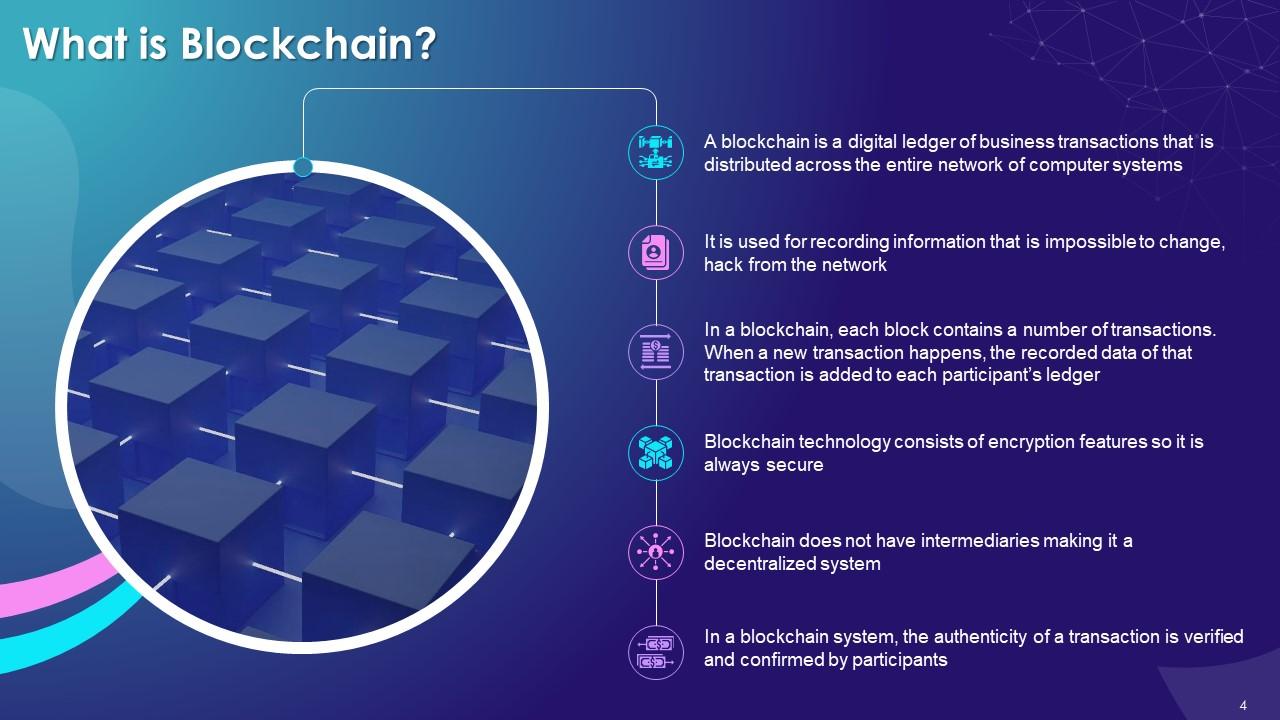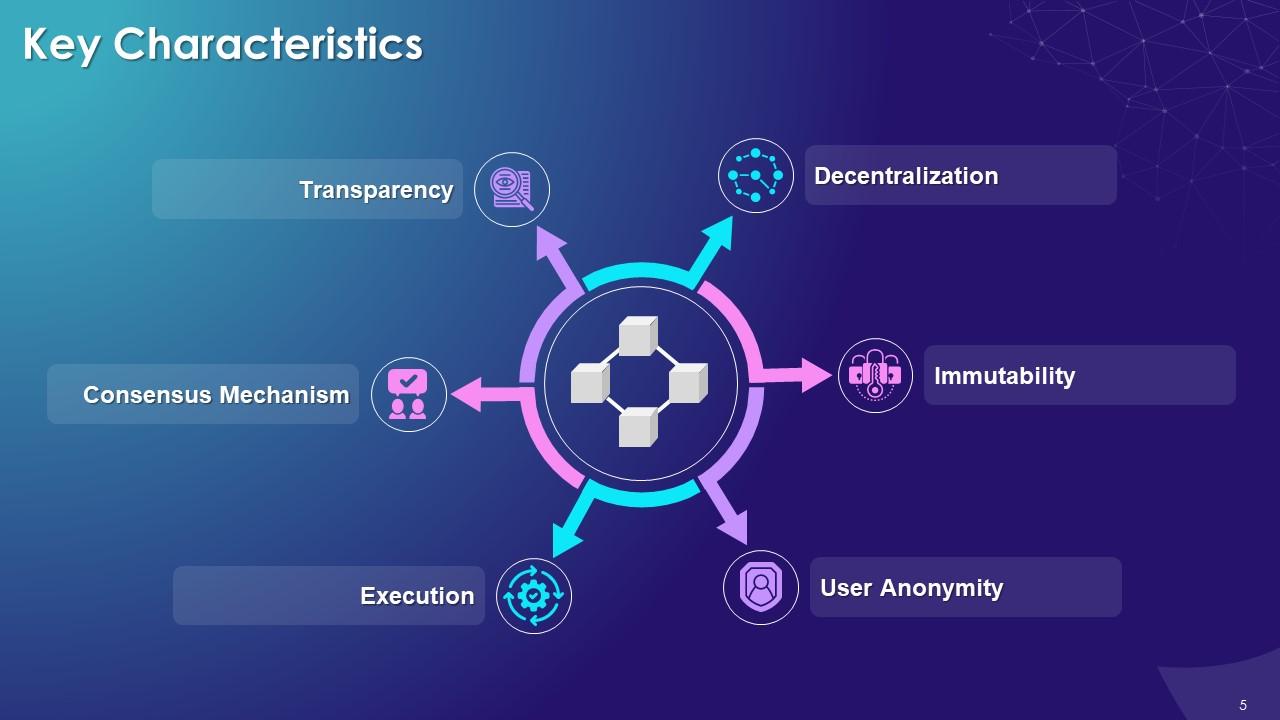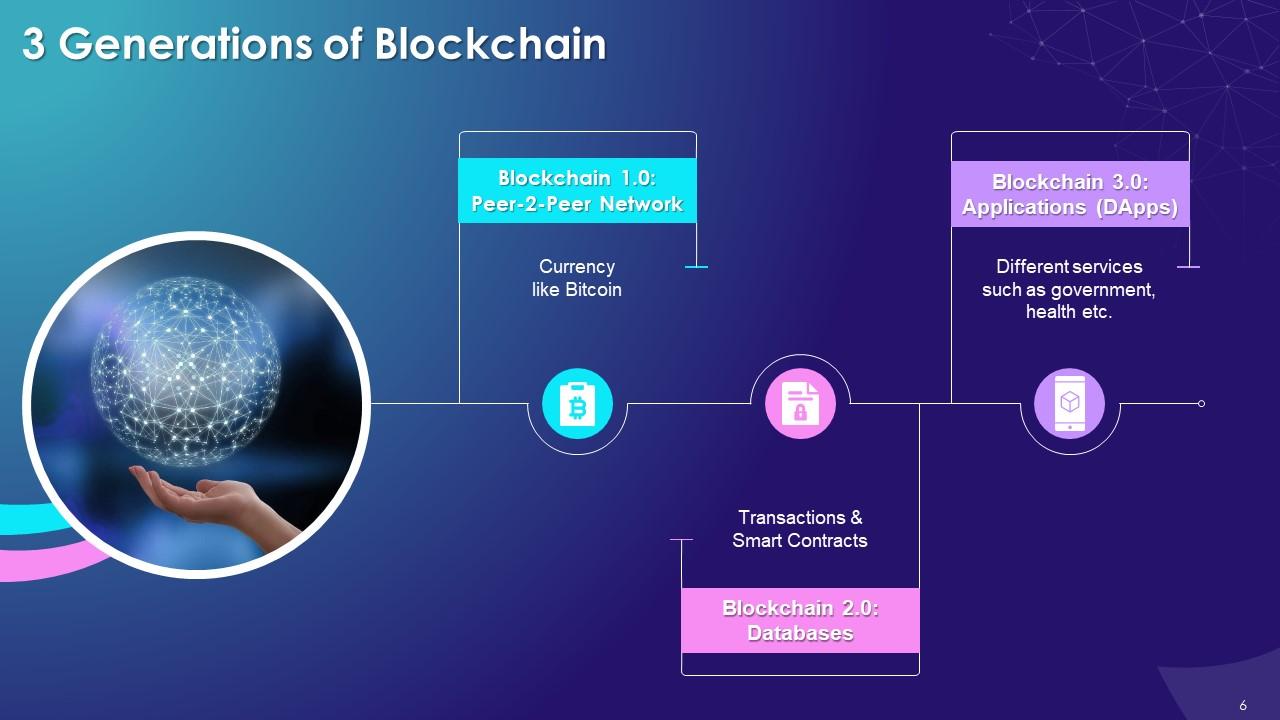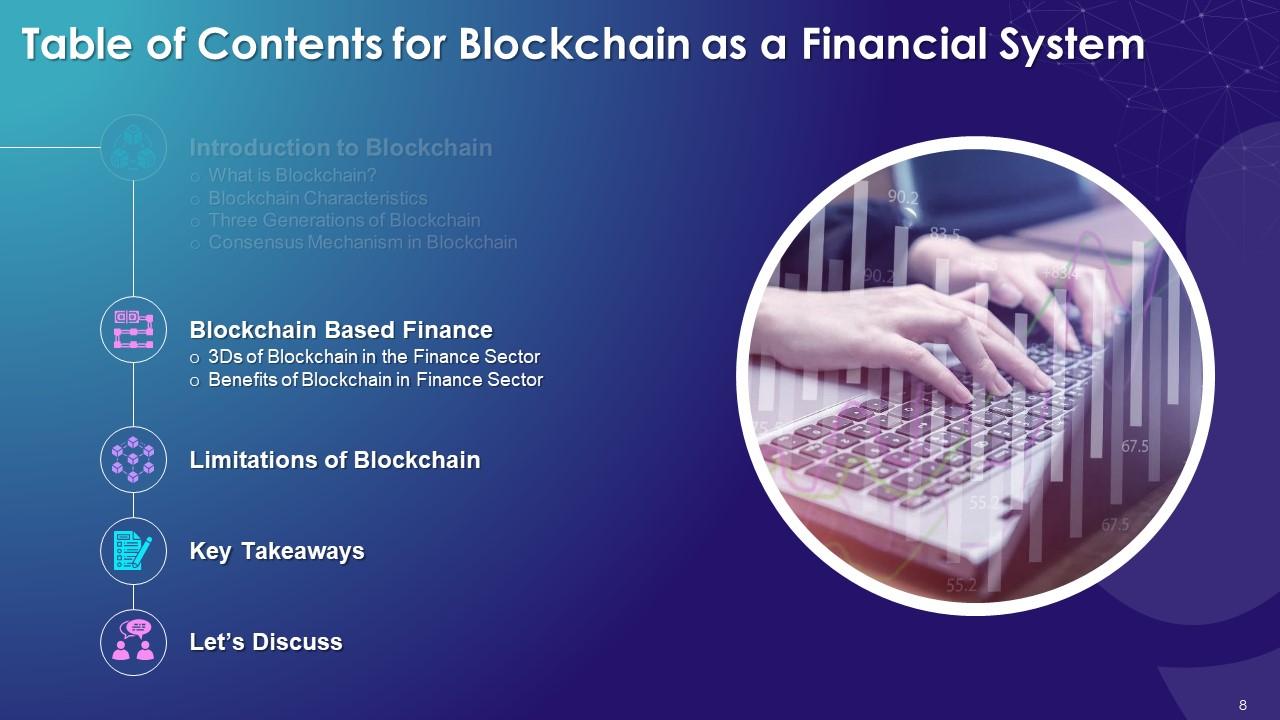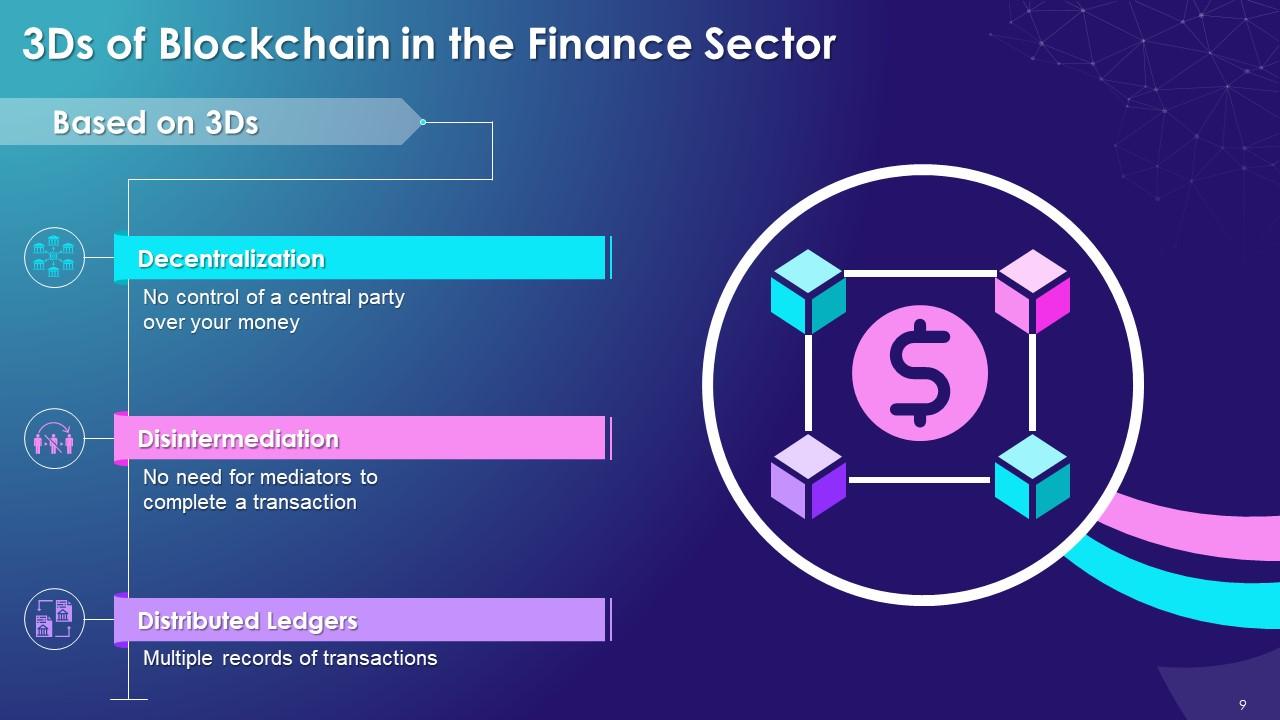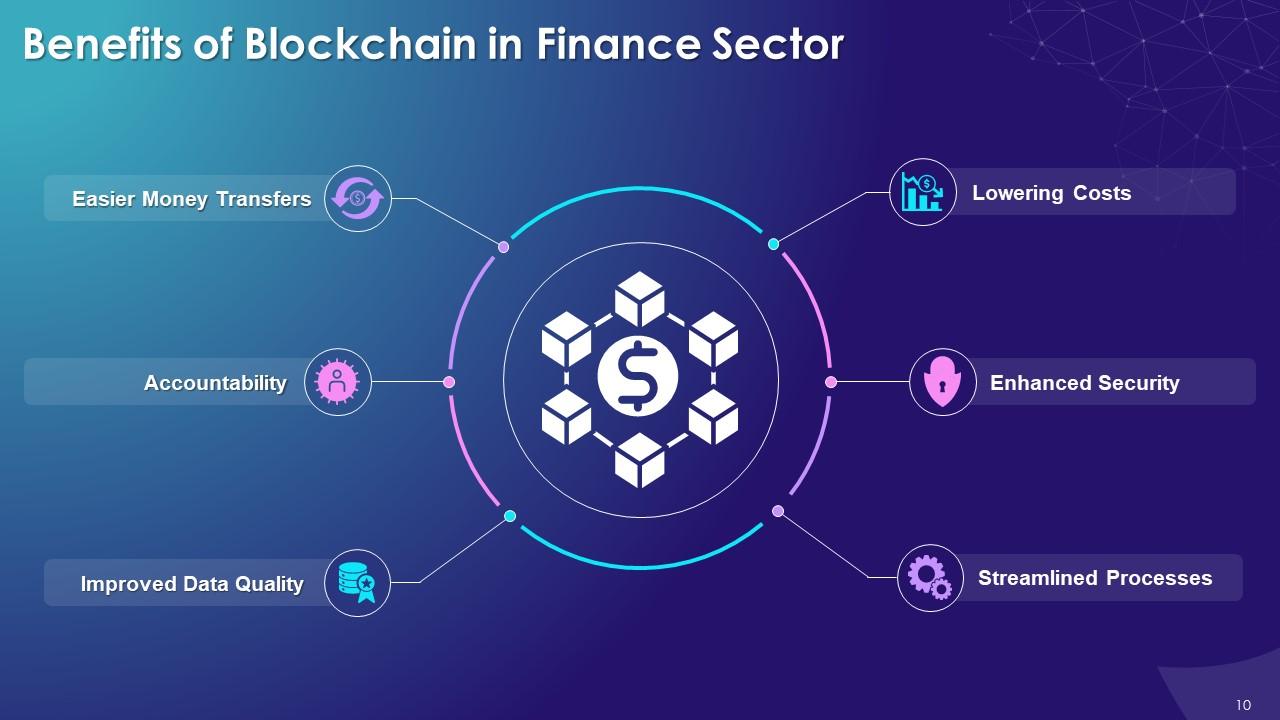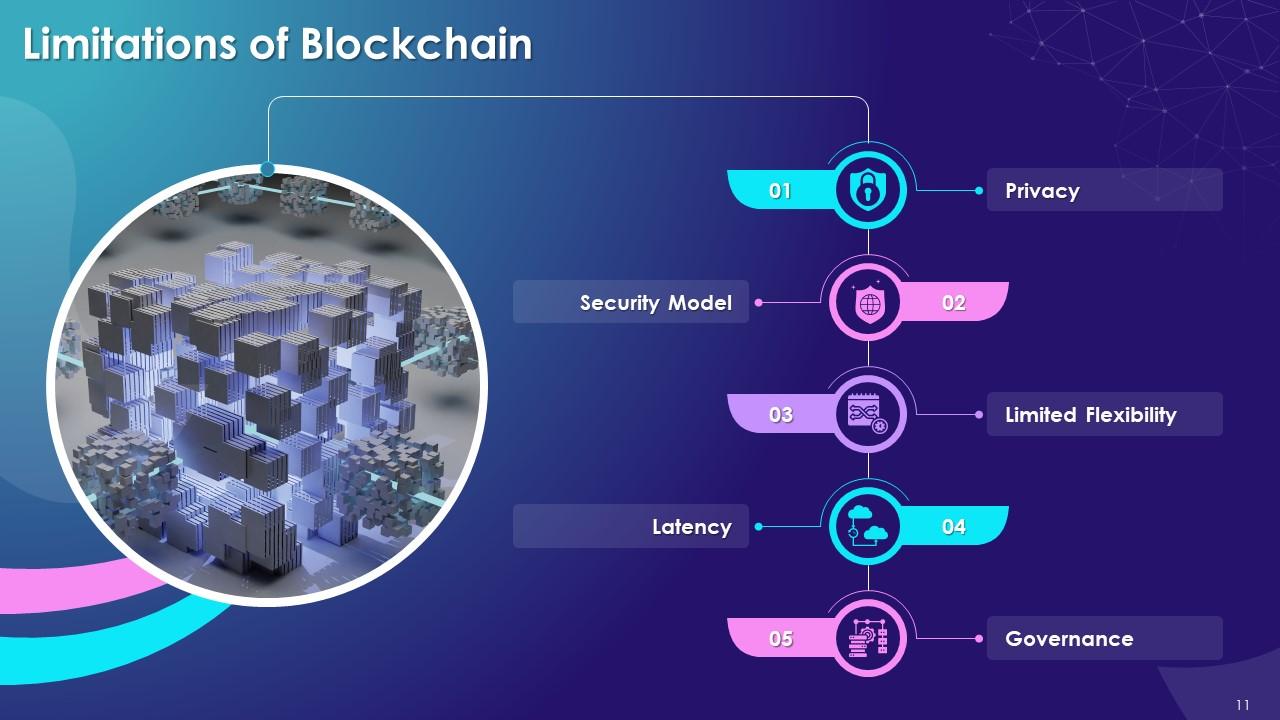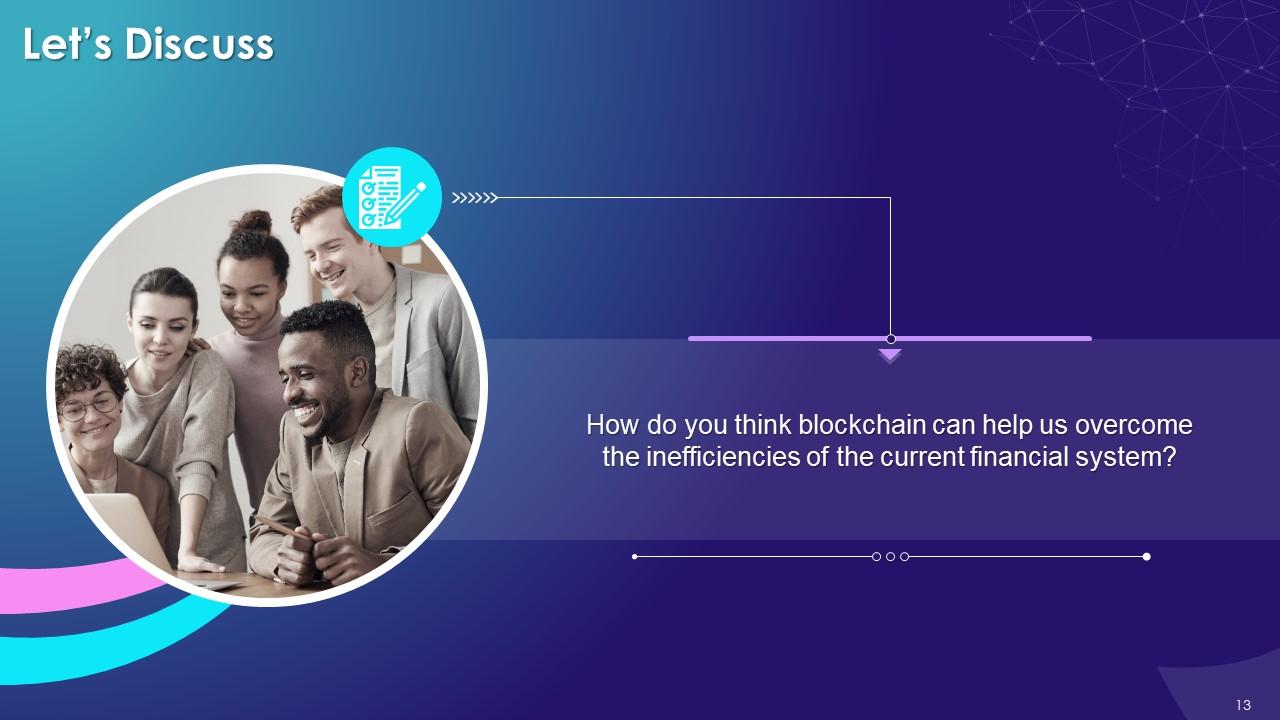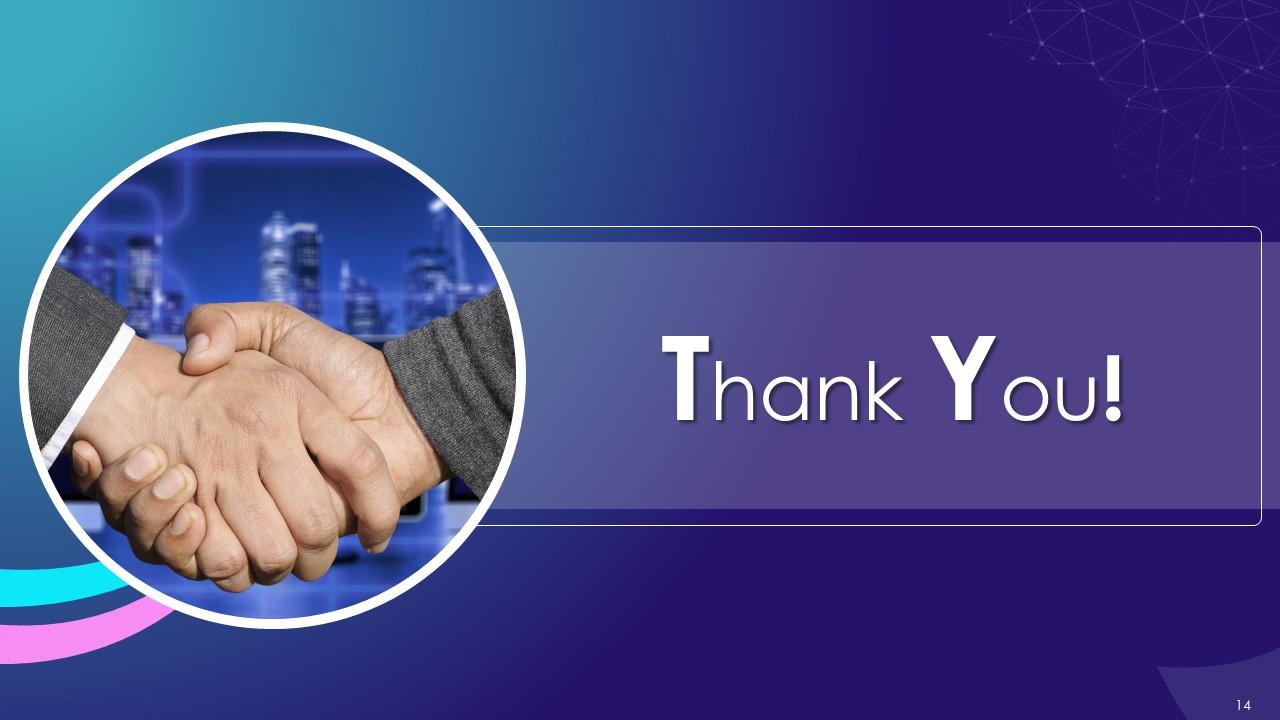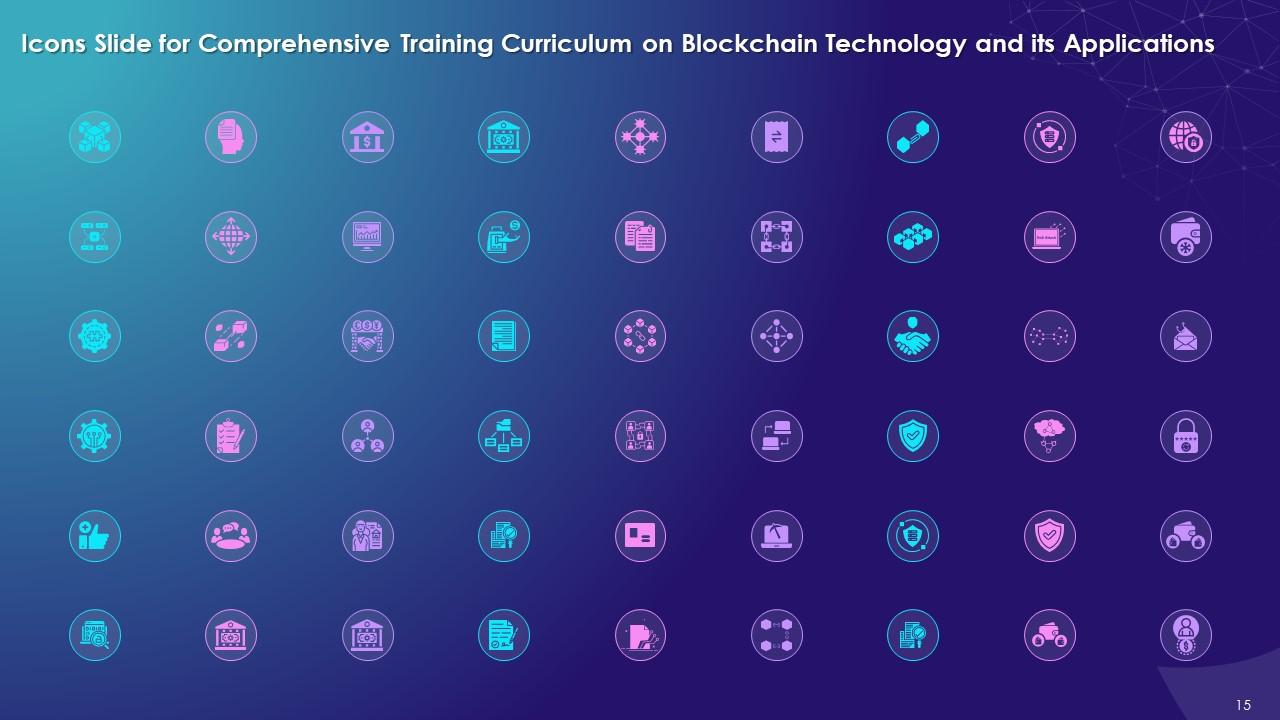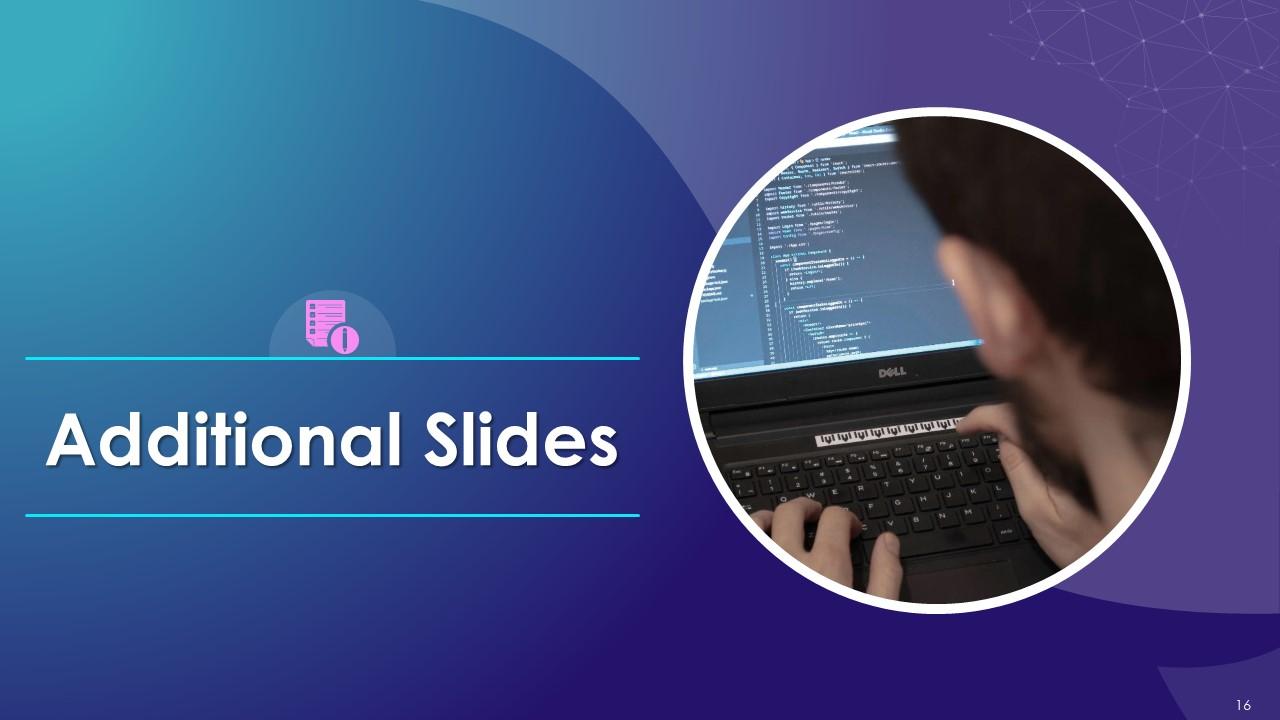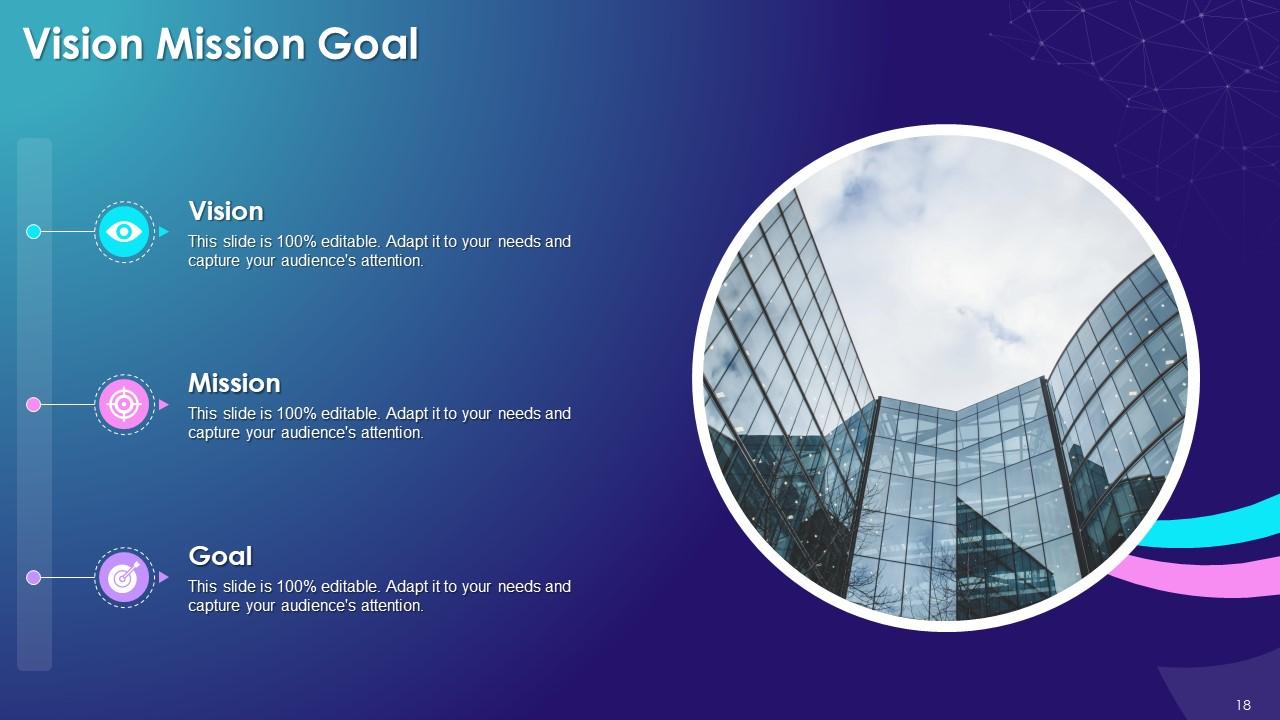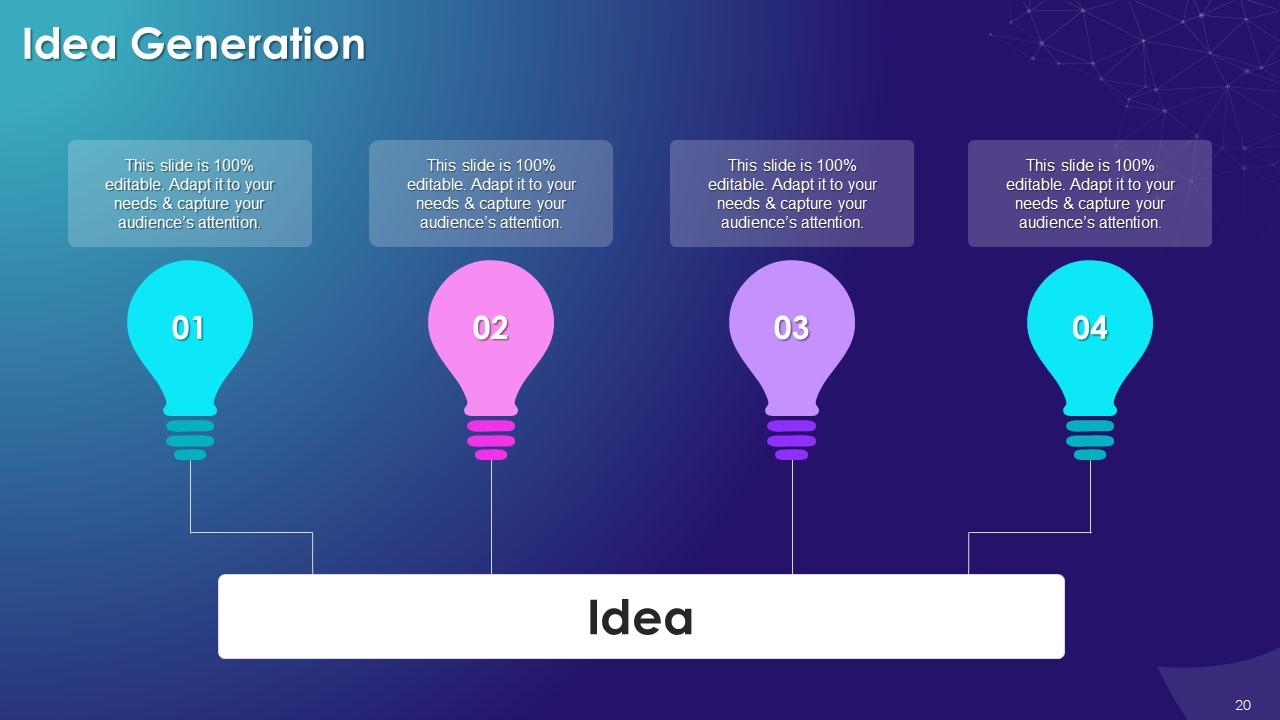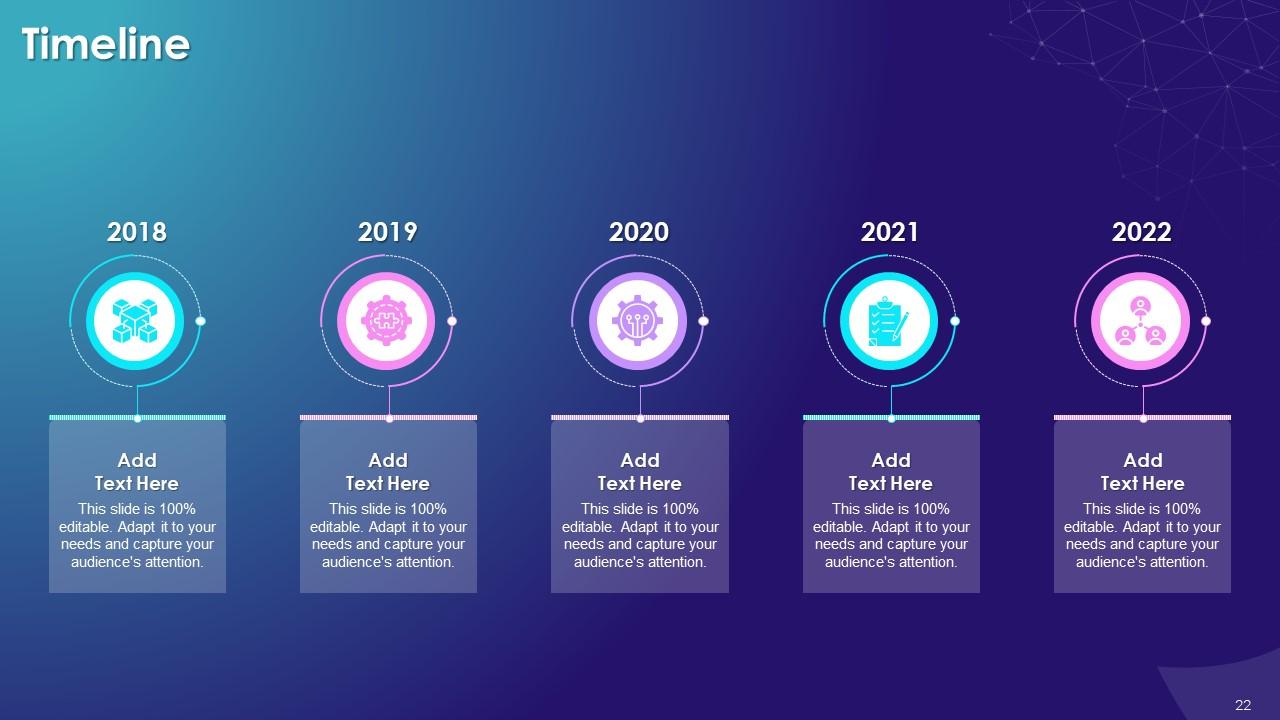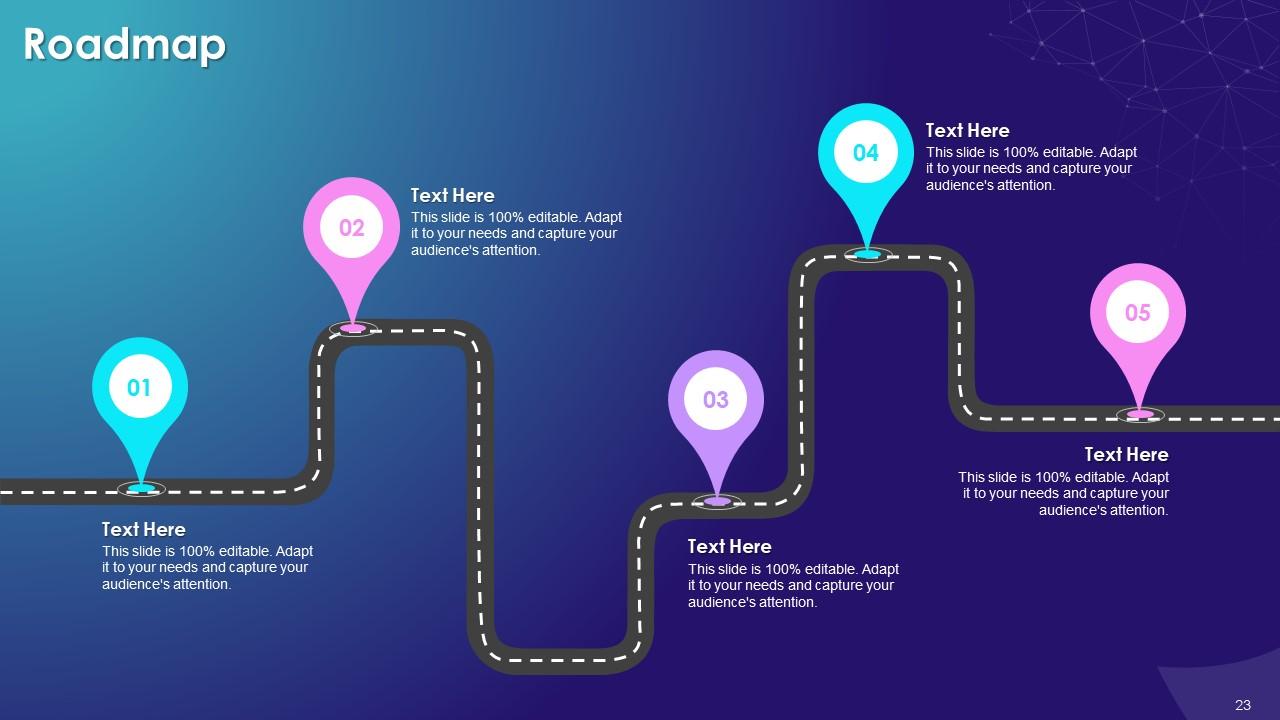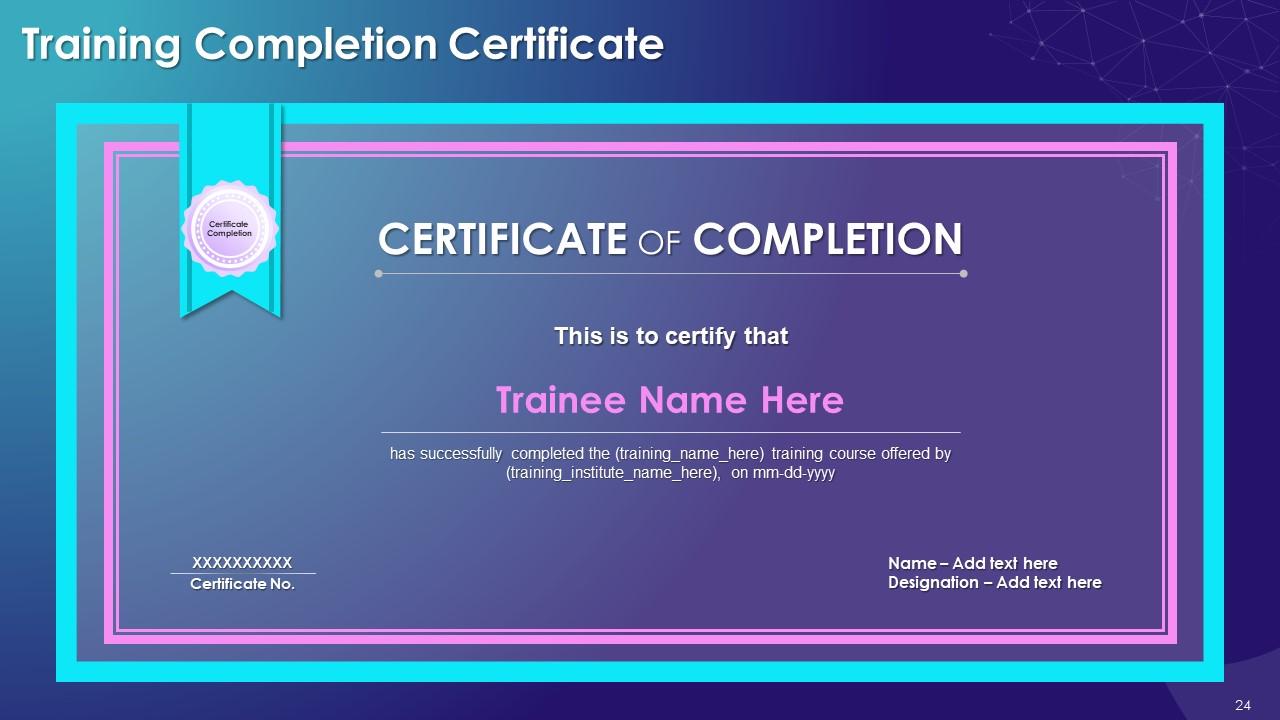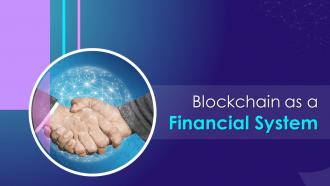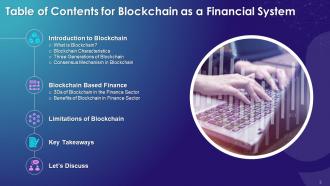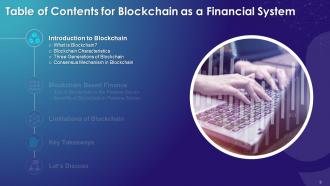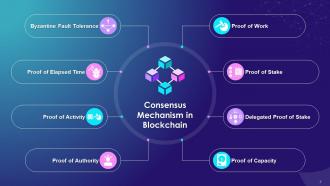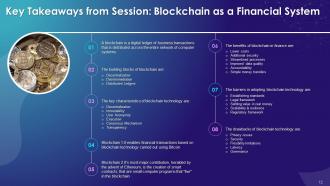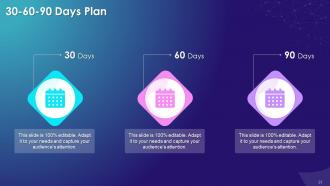Blockchain As A Financial System Training Ppt
This set of slides in depth covers blockchain technology-based financial system. It includes characteristics,generations,and consensus mechanisms in the blockchain. It also covers 3Ds and the advantages of blockchain in the finance sector.
This set of slides in depth covers blockchain technology-based financial system. It includes characteristics,generations,an..
- Google Slides is a new FREE Presentation software from Google.
- All our content is 100% compatible with Google Slides.
- Just download our designs, and upload them to Google Slides and they will work automatically.
- Amaze your audience with SlideTeam and Google Slides.
-
Want Changes to This PPT Slide? Check out our Presentation Design Services
- WideScreen Aspect ratio is becoming a very popular format. When you download this product, the downloaded ZIP will contain this product in both standard and widescreen format.
-

- Some older products that we have may only be in standard format, but they can easily be converted to widescreen.
- To do this, please open the SlideTeam product in Powerpoint, and go to
- Design ( On the top bar) -> Page Setup -> and select "On-screen Show (16:9)” in the drop down for "Slides Sized for".
- The slide or theme will change to widescreen, and all graphics will adjust automatically. You can similarly convert our content to any other desired screen aspect ratio.
Compatible With Google Slides

Get This In WideScreen
You must be logged in to download this presentation.
PowerPoint presentation slides
Presenting Blockchain as a Financial System. Our PowerPoint experts have included all the necessary templates,designs,icons,graphs,and other essential material. This deck is well crafted by extensive research. Slides consist of amazing visuals and appropriate content. These PPT slides can be instantly downloaded with just a click. Compatible with all screen types and monitors. Supports Google Slides. Premium Customer Support is available. Suitable for use by managers,employees,and organizations. These slides are easily customizable. You can edit the color,text,icon,and font size to suit your requirements.
People who downloaded this PowerPoint presentation also viewed the following :
Content of this Powerpoint Presentation
Slide 1
This slide presents the cover image for emerging trends around blockchain training module.
Slide 4
This slide showcases the definition of blockchain. We also learn that blockchain is a digital ledger of business transactions that is difficult to change and hack.
Slide 5
This slide lists the key characteristics of blockchain technology such as Decentralization, Immutability, User Anonymity, Execution, Consensus Mechanism and Transparency.
Instructor’s Notes:
- Decentralization: Each classic centralized transaction needs a central trusted entity (such as the bank) to confirm it. On the other hand, each entity on the blockchain, without a third party, can access the relevant database and review transaction history. The main advantage of blockchain is that it may be replicated throughout a dispersed network. Besides, distributed ledgers automatically record transactions in real-time, lowering the risk of fraud
- Immutability: A blockchain keeps a detailed, chronological record of all transactions. It's almost impossible to change or delete transactions or add information that hasn't been confirmed because everyone on the network has a copy of the ledger
- User Anonymity: Transactions take place between addresses on the Blockchain. Each user has an alphanumeric address, which can be kept private or shared. Users can interact with the blockchain network using the issued address, and there is no longer any centralized authority to store private information of users
- Execution: Users can use algorithms and rules to initiate transactions between nodes. If certain circumstances are met, blockchain can also run programs, referred to as smart contracts
- Consensus Mechanism: Since there is no single trusted agent in the entire network, a consensus mechanism is implemented through technology. The goal is to agree on how each record should be validated
- Transparency: Blockchain adds transparency to the process of tracking any transaction. It provides a bird's eye view of the whole ledger. It can assist in asset tracking and record & display past asset records. Providing stakeholders with reliable,relevant, and unedited information in real-time improves corporate governance. It can also ensure that data is delivered to the right people at the right time
Slide 6
This slide depicts the three levels of blockchain, namely cryptocurrencies, smart contracts, and governance mechanisms.
Instructor’s Notes:
- Blockchain 1.0: Blockchain 1.0 enabled/is still enabling financial transactions based on blockchain technology using Bitcoin. This version is permissionless; thus, any participant can conduct a legitimate bitcoin transaction. Currency and payments are the most common applications
- Blockchain 2.0: Blockchain 2.0's major contribution, that Ethereum has heralded, is the creation of smart contracts. These are small computer programs that 'live’; in the blockchain. They are self-contained systems that perform autonomously under predetermined conditions, such as facilitating, verifying, or enforcing contract execution. Smart Contracts lower the cost of verification, implementation, arbitration, and fraud protection and allow for clear contract definition, eliminating the moral hazard issue
- Blockchain 3.0: The abbreviation DApp refers to a decentralized application that does not rely on centralized infrastructure. As it relies on decentralized storage and communication, most DApps execute their backend code on a decentralized peer-to-peer network, such as a blockchain
Slide 7
This slide indicates the Multiple Types of Consensus Mechanism Algorithms in Blockchain that are Proof of Work, Proof of Stake, Delegated Proof of Stake, Proof of Capacity, Proof of Authority, Proof of Activity, Proof of Elapsed Time abd Byzantine Fault Tolerance.
Instructor’s Notes:
The multiple types of consensus mechanism algorithms in blockchain are
- Proof of Work (PoW): Miners compete against each other to solve a complicated mathematical puzzle to create a new block in order to complete transactions on the blockchain network
- Proof of Stake (PoS): The Proof of Stake is a consensus mechanism in which validators are selected in a deterministic manner to create blocks based on their stake or equity ownership in the blockchain
- Delegated Proof of Stake (DPoS): In the DPoS consensus mechanism, blockchain users vote and select delegates/witnesses to validate transactions in the blockchain
- Proof of Capacity (PoC): In the Proof of capacity (PoC) consensus mechanism, the mining equipment uses their available hard drive device space to decide the mining rights
- Proof of Elapsed Time (PoET): In PoET, the user who generates a new block is decided randomly and fairly using the waiting time (explain)
- Proof of Authority (PoA): Proof of Authority is a reputation-based consensus mechanism in which the rights to generate new blocks are awarded to nodes that have proven their authority to do so
- Proof of Activity: In the blockchain, Proof of Activity is a hybrid consensus mechanism that combines the features of both Proof of Work (PoW) and Proof of Stake (PoS) consensus algorithms
- Proof of Elapsed Time (PoET): In PoET, each node has to wait for a randomly generated specific time period, and the node which completes this wait time first wins the rights to create the new block
- Byzantine Fault Tolerance (BFT): BFT helps create a new block in blockchain by reaching the consensus even if some nodes in the network fail to respond or respond with incorrect information. There are many variations of BFT that are deployed based on use cases
Slide 9
This slide discusses the foundation of the blockchain technology that allows it to be integrated into the financial sector. The building blocks of blockchain are the 3Ds of Decentralization, Disintermediation and a Distributed Ledger.
Slide 10
This slide talks about the general influence of blockchain technology on the finance sector along with the benefits it offers, such as lower costs, enhanced security, streamlined processes, improved data quality, accountability, and easier money transfers.
Instructor’s Notes:
- Lowering Costs: Banking institutions can save a considerable amount of money by implementing blockchain technology. Smart blockchain contracts can lower intermediary cost, while also lowering maintenance and implementation costs
- Enhanced Security: Improved security is another advantage of adopting blockchain for financial services. When transactions happen faster, hackers have less time to obtain transaction data or reroute payments
- Streamlined Processes: Increased automation improves the overall efficiency. It allows for real-time settlement, monitoring, and reporting, along with a decrease in processing times, the risk of errors and latency. It reduces the number of intermediaries needed to attain the same levels of assurance that traditional processes offer
- Improved Data Quality: All sorts of information can be stored on a blockchain, all the information can be accessed, provided the seeker follows specific rules and procedures. Smart contracts are used in the technology to automatically validate and execute a transaction, which enhances data integrity and makes it immune to outside intervention
- Accountability: Institutions can prevent the misuse of their funds and all sorts of fraud. Banks can handle and monitor transactions better since blockchain makes transactions traceable and easier to verify
- Easier Money Transfers: Blockchain technology has the potential to ease international money transfers. Businesses and customers endure delays, additional costs, and bureaucracy while sending money using the conventional approach. Blockchain provides a more straightforward, faster, and efficient way to implement cross-border transactions
Slide 11
This slide lists the drawbacks of blockchain technology such as privacy issues, security, limited flexibility, latency and governance.
Instructor’s Notes:
- Privacy: All network participants may see, trace, and monitor transactions that have been validated and added to the blockchain. This feature ensures transaction transparency and security, while also blocking any transactions requiring complete privacy protection
- Security Model: Participants in the chain use public or private key cryptography to verify and validate transactions recorded into the blockchain. The key that grants access to the blockchain is kept on a physical device that might be misplaced, broken, or stolen. The system would be unable to safeguard one or more subjects if they inadvertently lost or released their private key
- Flexibility Limitations: The blockchain's immutability ensures transaction integrity, but it can make it challenging to deploy the technology in situations when transactions must be modified
- Latency: Due to network latency, a decentralized blockchain is not always consistent. Different blocks may arrive at different nodes at different times, resulting in temporary blockchain inconsistencies known as forks. If transaction verification is delayed, the organization may not see the benefit of implementing blockchain
- Governance: Blockchain's decentralization provides a benefit in terms of transaction disintermediation. The dispersed nature of the blockchain, on however, maybe a constraint in terms of network control and surveillance
Slide 12
This slide summarizes the session on Blockchain as a Financial System in the form of key takeaways; the major one that must be remembered is the 3Ds of the technology and some of its drawbacks. Overall, we have to take home a balanced view on this important issue that has ramifications for all of us.
Blockchain As A Financial System Training Ppt with all 29 slides:
Use our Blockchain As A Financial System Training Ppt to effectively help you save your valuable time. They are readymade to fit into any presentation structure.
-
SlideTeam offers so many variations of designs and topics. It’s unbelievable! Easy to create such stunning presentations now.
-
Requested a complete pitch deck. Delivered immediately and with high quality well researched content.





